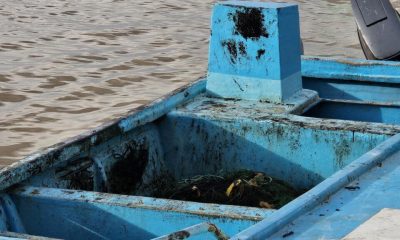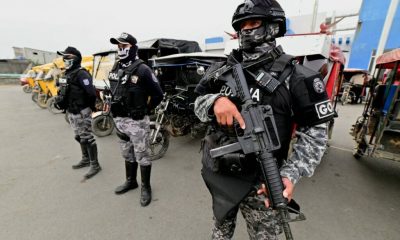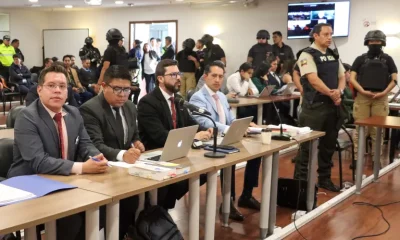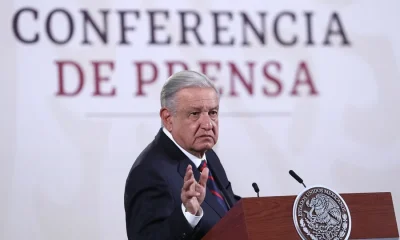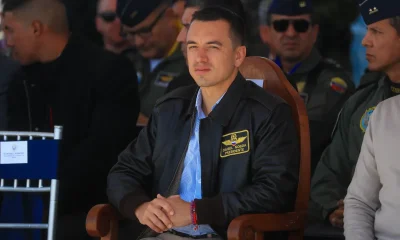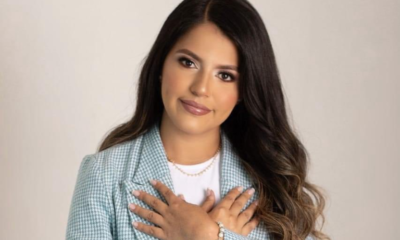International
H: the heroin derivative ravaging Ecuador’s poor
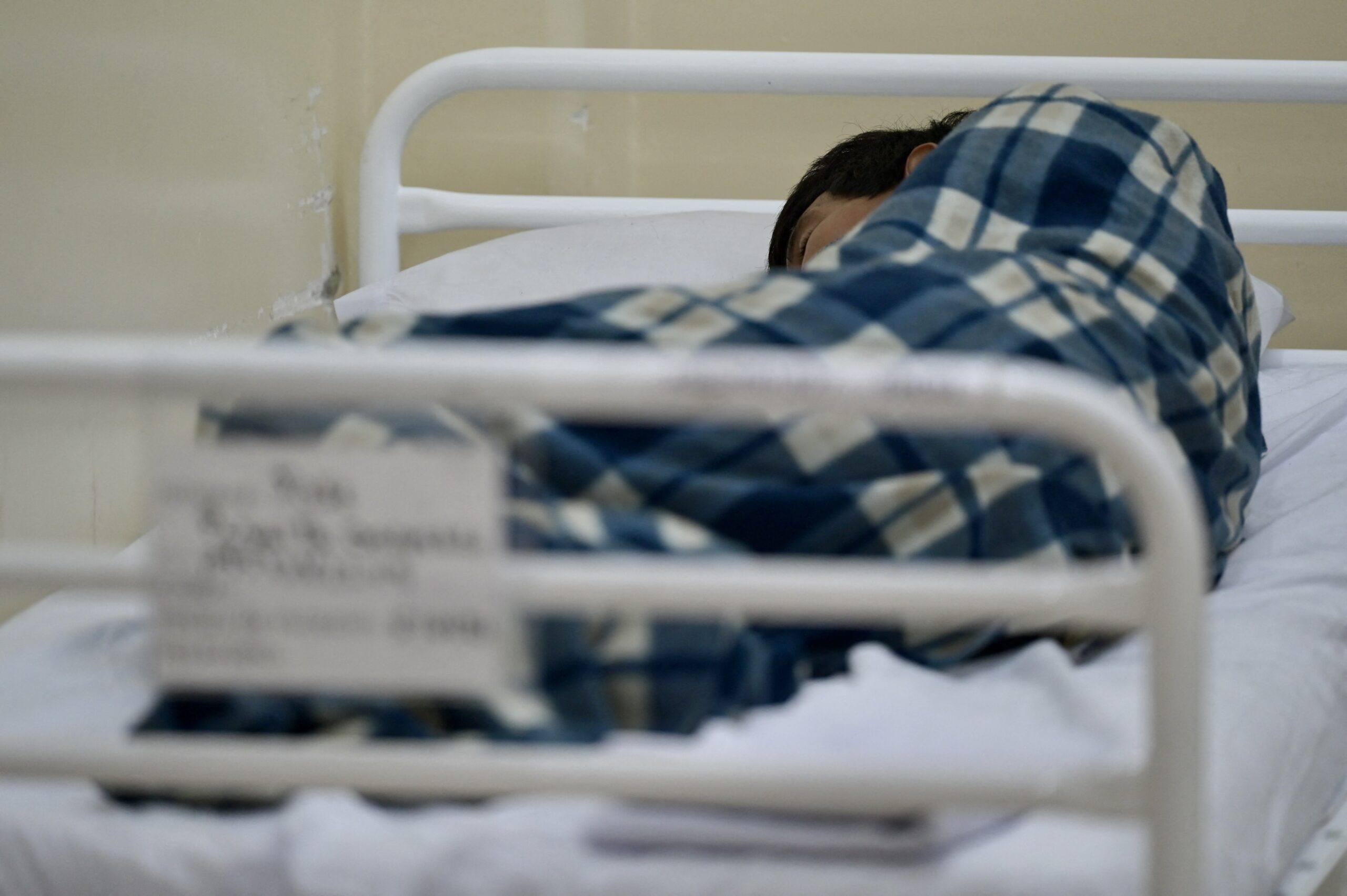
January 20 | By AFP | Karla Pesantes |
Shaking and delirious, Rina ambles half-dressed beside a dump in Ecuador’s port city of Guayaquil.
She is under the psychotropic effects of “H,” a cheap and addictive drug that is ravaging the poorest sectors of Ecuadoran society.
The scene was captured on video on New Year’s Eve and relayed to the municipal health center, which came to her aid.
“When I consume (the drug) I hear voices,” the 24-year-old, who is using a pseudonym, told AFP.
For the second time in less than a year she is following a drug rehabilitation program.
In her desperation, Rina stole and even worked as a prostitute to buy H, a heroin-based white powder that can be snorted or smoked and is sold for $1 a gram.
It is much cheaper and much more toxic than cocaine, which goes for $3 to $5.
H is cut with all sorts of toxic materials that can harm humans.
“We have found lime, cement, ether, rat poison and even ketamine, an analgesic used on horses,” in the white powder, said psychiatrist Julieta Sagnay, from the Guayaquil-based Neuroscience Institute, an NGO that supports drug addicts.
Guayaquil, a city of almost three million people, has become a hub of drug trafficking and addiction.
Officials say 162 kilograms of H were seized in 2022.
Sagnay, an expert with more than 30 years of experience treating addicts, says the number of patients she treats for H use is increasing every day.
And their physical condition deteriorates quicker than other patients.
In just six months, H addicts are constantly moving their legs, scratching, and not sleeping or eating.
Withdrawal symptoms are so severe, says Sagnay, that it is unbearable without at least eight days of pharmaceutical treatment.
‘They beat me’
There are three public clinics in Guayaquil for addicts and there are more than 30 private ones but they can cost up to $700 a month in a country where the minimum wage is just $450.
Some addicts turn to back-alley detox centers.
“They beat me, they poured a bucket of cold water on me and we ate chicken heads every day,” said Hugo Mora, who was treated four years ago in a dirty, dark, illegal center with no windows.
It only cost $150 but it was a failure.
After trying out two such clinics, the 24-year-old street vendor spent a week in a municipal hospital, where he was treated in a large room with more than a dozen beds.
The hospital takes in up to 150 daily patients, 90 percent of whom are suffering from an H addiction.
The InSight Crime think tank says H arrived in Guayaquil in 2011, pushed by Colombian cartels hoping to develop the heroin market.
But the H powder contains less than three percent heroin, according to forensic psychologist and retired police officer Segundo Romero.
“As there is so little pure drug, the addict needs to consume more and buy more,” said the forensic psychologist.
He told a story about meeting addicts in prison whose faces were covered in dust.
“As they no longer had any drugs, they had scratched the walls and put white paint in their nostrils,” he said.
With just one gram of heroin, a dealer can make 40 grams of H, with the mix of ingredients provoking psychotic symptoms and hallucinations.
In Cerro las Cabras, the drug supermarket in Duran, a town opposite Guayaquil along the Guayas river, H sales bring in $1 million a month, according to official estimates.
International
Rubio rules out 2028 presidential bid if Vance runs

U.S. Secretary of State Marco Rubio said he would not seek the presidency in 2028 if current Vice President JD Vancedecides to run as the Republican nominee to succeed President Donald Trump.
“If JD Vance runs for president, he will be our candidate, and I will be one of the first people to support him,” Rubio said in an interview with Vanity Fair, in which he appeared alongside other senior members of the presidential cabinet.
Rubio, 54, and Vance, 41, are widely viewed as two of the leading Republican figures who could headline the party’s ticket in the 2028 election. Under the U.S. Constitution, Trump is barred from seeking another term after completing two presidential mandates.
In a lighthearted moment during the interview, Vance jokingly offered photographers $1,000 if they managed to make him look better than Rubio in the photos. Both leaders have received public backing from Trump, who last October floated the idea of a joint ticket featuring Rubio and Vance, without clarifying who would lead it.
“I think that if they ever teamed up, they would be unstoppable. I don’t think anyone would run against us,” Trump said at the time.
White House Chief of Staff Susie Wiles, who also took part in the interview, confirmed that Trump does not intend to violate the 22nd Amendment, which prohibits a third presidential term, though she acknowledged that the president is “having fun” with speculation about a possible return to office.
Rubio, the son of Cuban immigrants, served as a Republican senator from 2010 to 2025. He sought the party’s presidential nomination in 2016 but was defeated by Trump after a bruising primary contest. His name was floated as a potential vice presidential pick in 2024, but Vance ultimately secured the spot. After taking office, Trump appointed Rubio as secretary of state, making him the first Latino to hold the position.
International
Authorities search for armed and dangerous suspect in fatal Brown University attack
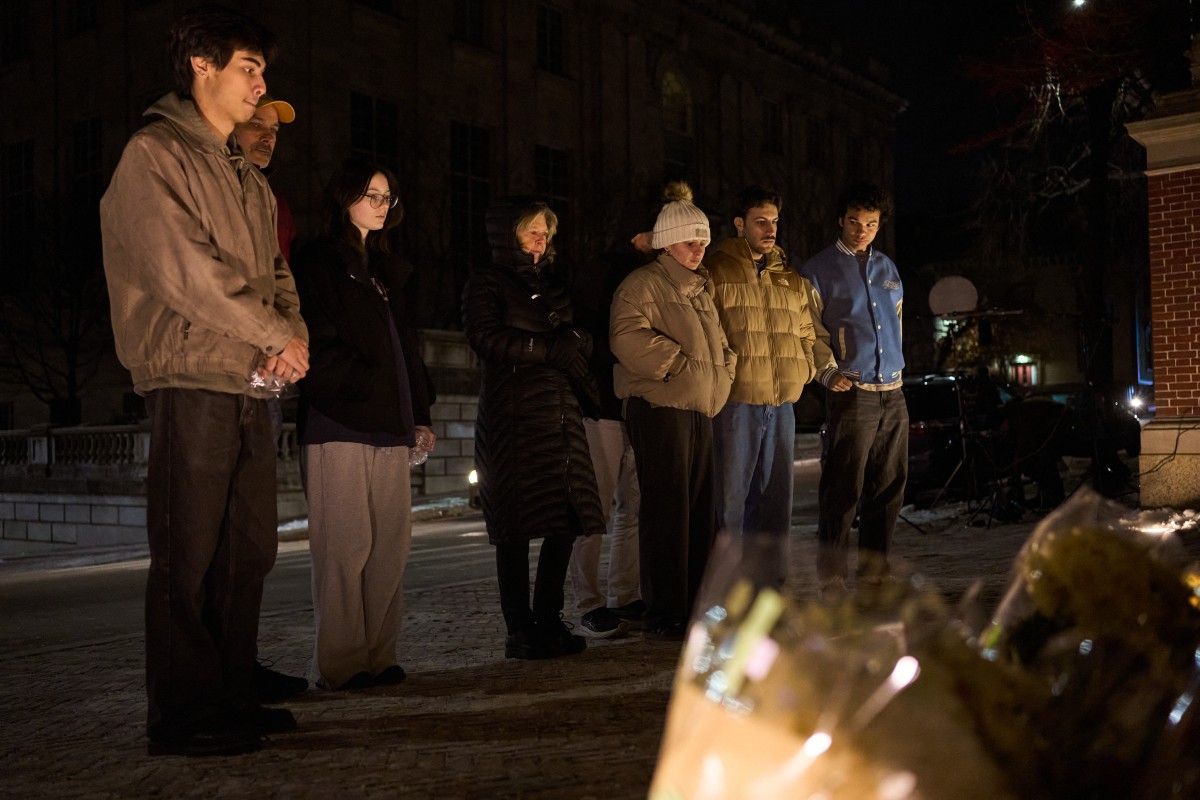
According to the statement, investigators are “seeking the public’s help to identify and speak with an individual” who was seen “near” the suspect at the time of the attack.
The Providence Police Department in Rhode Island released three photos of the person of interest, whose face has been blurred. In the images, the individual is wearing navy blue clothing, what appears to be a green hood, and carrying a light-colored backpack.
Earlier, authorities had released several photos and videos of a suspect described as “approximately 5 feet 8 inches tall, with a stocky build,” dressed in dark clothing, with their face covered by a surgical mask and wearing a beanie. The suspect’s identity remains unknown.
Authorities are offering a $50,000 reward for any information leading to the identification, arrest, and conviction of the person responsible for the killings, who is considered armed and dangerous.
The gunman opened fire on Saturday at Brown University’s engineering and physics building, where exams were being held, killing students Ella Cook and Mukhammad Aziz Umurzokov. The names of the nine people injured have not been released.
International
Police investigate deaths of Rob Reiner and wife as apparent homicide

The Los Angeles Police Department (LAPD) is investigating the deaths of Hollywood actor and filmmaker Rob Reinerand his wife as an “apparent homicide,” amid a wave of tributes to the director of classics such as When Harry Met Sally.
According to U.S. media reports on Sunday, Rob Reiner and Michele Singer Reiner were found dead at their Los Angeles mansion with what appeared to be stab wounds.
Several political figures shared messages of condolence following the reported deaths of the director of A Few Good Menand his wife.
While the LAPD did not officially confirm the identities of the victims, it stated that homicide detectives were dispatched to the Reiner residence.
“At this time, no additional details are available and the investigation into an apparent homicide is ongoing,” the Los Angeles Police Department said in a statement posted on social media.
LAPD Deputy Chief Alan Hamilton told reporters that no arrests have been made and that no individuals are currently being questioned as suspects.
“I’m not going to confirm whether anyone is being questioned at this moment or not. We are going to try to speak with as many family members as we can,” Hamilton said.
CNN reported that a family spokesperson confirmed the deaths of Reiner and his wife.
California Governor Gavin Newsom, former U.S. President Barack Obama, and former Vice President Kamala Harrisissued statements expressing their condolences.
-

 Central America4 days ago
Central America4 days agoPanama seizes over three tons of drugs hidden in Caribbean port container
-

 International3 days ago
International3 days agoPolice investigate deaths of Rob Reiner and wife as apparent homicide
-

 Central America3 days ago
Central America3 days agoOAS urges swift recount in Honduras as election results remain uncertain
-

 Central America2 days ago
Central America2 days agoEl Salvador ranks among top countries in the Americas in fight against organized crime
-

 Central America2 days ago
Central America2 days agoBukele says AI partnership with xAI will transform public education in El Salvador
-

 International5 days ago
International5 days agoU.S. and Mexico Reach Deal to Address Water Deficit Under 1944 Treaty
-

 International1 day ago
International1 day agoRubio rules out 2028 presidential bid if Vance runs
-
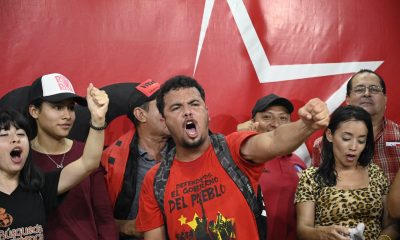
 Central America1 day ago
Central America1 day agoArrests and clashes in Tegucigalpa as vote count continues after Honduras election
-
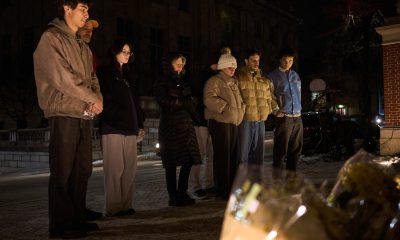
 International1 day ago
International1 day agoAuthorities search for armed and dangerous suspect in fatal Brown University attack

























